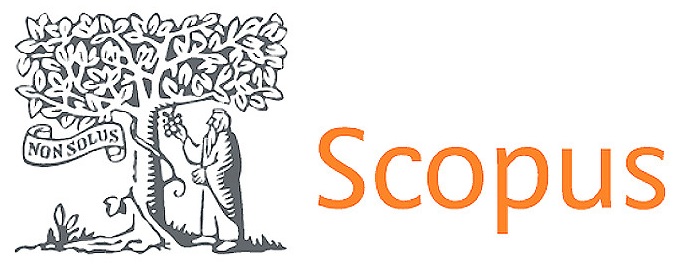Social and economic determinants in the use of bottles and pacifiers by Ecuadorian mothers
DOI:
https://doi.org/10.56294/saludcyt20251638Keywords:
social determinants, breastfeeding, PESTEL analysis, logistic regression, child healthAbstract
The purpose of this study was to identify the social and economic determinants influencing the use of bottles and pacifiers by Ecuadorian mothers. The objective was to explore the underlying factors guiding these decisions, considering aspects beyond the physical consequences, and promoting healthier parenting practices. The research employed an analytical and cross-sectional design, with a sample of 120 mothers selected through intentional non-probabilistic sampling. PESTEL analysis was utilized to evaluate the political, economic, social, technological, ecological, and legal factors involved, along with a logistic regression model to quantify the relationship between social and economic variables and the use of bottles and pacifiers. The results highlighted the influence of government campaigns in urban areas, while also pointing out the access gap in rural areas. Economic and educational factors were significant determinants, revealing that mothers with lower incomes and educational levels were more likely to use these products. The impact of technology on access to information about breastfeeding was also identified. The need for public policies to close the information and service gaps, especially in rural areas, in order to promote more informed decisions about the use of bottles and pacifiers for children under 2 years of age, became evident.
References
1. Lima Illescas MV, Rodríguez Soto A, García González B. Maloclusiones dentarias y su relación con los hábitos bucales lesivos. Rev Cubana Estomatol [Internet]. 2019;56(2):online. Available from: http://scielo.sld.cu/scielo.php?pid=S0034-75072019000200009&script=sci_arttext&tlng=pt
2. Campaña KAC, Martínez MMGMG, Briones FMA. Alteraciones orales por uso de biberón y chupete en niños menores de 3 años. Gac Médica Estud [Internet]. 2023;4(1):e285–e285. Available from: https://revgacetaestudiantil.sld.cu/index.php/gme/article/view/83
3. Ali GH, Hasan SS. Disadvantages of using pacifier in infants: a systematic review. TMR Integr Nurs [Internet]. 2019;3(4):130–4. Available from: https://www.tmrjournals.com/public/articlePDF/20201204/57ee85cb7f7151f6affade3b41a3dd29.pdf
4. Morales-Zambrano JB, Gavilanes-Villamarín SM, Armijos-Moreta JF, Cleonares-Borbor AM. Repercusión de la succión nutritiva y no nutritiva en la primera infancia. Rev Inf Científica [Internet]. 2023;102(2 Sup):4387. Available from: https://revinfcientifica.sld.cu/index.php/ric/article/view/4387
5. Arango MC, Caldas GPB. Caries de la infancia temprana y factores de riesgo. Rev Estomatol [Internet]. 2004;12(1):7. Available from: https://dialnet.unirioja.es/servlet/articulo?codigo=9777708
6. Fernández Medina IM, González Fernández CT. Lactancia materna: prevención de problemas tempranos en las mamas mediante una técnica de amamantamiento eficaz. Enfermería Glob [Internet]. 2013;12(31):443–51. Available from: https://scielo.isciii.es/pdf/eg/v12n31/enfermeria2.pdf
7. Comité de Lactancia Materna de la Asociación Española de Pediatría. Lactancia Materna: guía para profesionales. Ergon; 2024.
8. Ávila-Ortiz MN, Castro-Sánchez AE, Martínez-González EA, Núñez-Rocha GM, Zambrano-Moreno A. Factors associated with abandoning exclusive breastfeeding in Mexican mothers at two private hospitals. Int Breastfeed J [Internet]. 2020;15:1–9. Available from: https://link.springer.com/article/10.1186/s13006-020-00316-6
9. Hernández Monterrosa AL, Manzanares de Erickson C, Sánchez OA. Los factores de riesgo social en los adolescentes salvadoreños: ambiente familiar, conocimiento en sexualidad, pertenencia a grupos sociales, rendimiento académico, económico y cultural. Divers Perspect en Psicol [Internet]. 2022;18(2):4–19. Available from: https://www.semanticscholar.org/paper/Los-factores-de-riesgo-social-en-los-adolescentes-a-Monterrosa-Erickson/69a68331bfc46d53506076330711b92b71a87ef0
10. Sandoval AIQ, Velasco I de LC. Lactancia materna prolongada, mitos y realidades desde la nutrición. Rev Científica Arbitr Multidiscip PENTACIENCIAS [Internet]. 2024;6(4):329–41. Available from: https://doi.org/10.59169/pentaciencias.v6i4.1118
11. Bilo C, Tebaldi R. Maternidad y paternidad en el lugar de trabajo en América Latina y el Caribe: Políticas para la licencia de maternidad y paternidad y apoyo a la lactancia materna [Internet]. Research Report; 2020. Available from: https://policycommons.net/artifacts/2112691/maternidad-y-paternidad-en-el-lugar-de-trabajo-en-america-latina-y-el-caribe-politicas-para-la-licencia-de-maternidad-y-paternidad-y-apoyo-a-la-lactancia-materna/2867989/
12. Oribe M, Lertxundi A, Basterrechea M, Begiristain H, Santa Marina L, Villar M, et al. Prevalencia y factores asociados con la duración de la lactancia materna exclusiva durante los 6 primeros meses en la cohorte INMA de Guipúzcoa. Gac Sanit [Internet]. 2015;29:4–9. Available from: https://scielo.isciii.es/scielo.php?pid=S0213-91112015000100002&script=sci_arttext
13. Bettinelli ME. Breastfeeding policies and breastfeeding support programs in the mother’s workplace. J Matern Neonatal Med [Internet]. 2012;25(sup4):73–4. Available from: https://doi.org/10.3109/14767058.2012.715033
14. Steurer LM. Maternity leave length and workplace policies’ impact on the sustainment of breastfeeding: global perspectives. Public Health Nurs [Internet]. 2017;34(3):286–94. Available from: https://doi.org/10.1111/phn.12321
Downloads
Published
Issue
Section
License
Copyright (c) 2025 Gladys Viviana Urrego Cueva , Angélica Lissette Ortiz Moya , Marcela Rashell Barahona Carabalí (Author)

This work is licensed under a Creative Commons Attribution 4.0 International License.
The article is distributed under the Creative Commons Attribution 4.0 License. Unless otherwise stated, associated published material is distributed under the same licence.



